|
 |
|
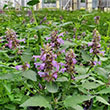
Upright, clumping, fragrant foliage with prolific and showy deep violet bottle brush flowers. This long bloomer tolerates heat and deer. USDA 5-9
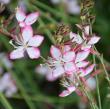
White flowers with a candy-pink picotee. Open, vase-shaped habit; tolerant of heat, humidity, and some drought once established. USDA 5-9
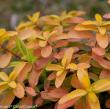
Bright yellow flowers bloom in spring to late summer, followed by attractive yellow to orange berries. Deer resistant. USDA 5-9
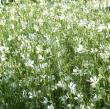
Pure white blooms. Compact. Tolerates poor soils. USDA 5-9
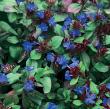
Height: 12 inches
Spread: 18 inches
Sunlight: full sun, partial shade
Hardiness Zone: 4b
Other Names: Leadwort
Description:
Excellent groundcover with clusters of the truest blue flowers in late summer; foliage turns a nice bronzy-red color in fall; flowers resemble that of woodland phlox, and the red calyces add a wonderful color contrast
Ornamental Features:
Plumbago features showy clusters of blue star-shaped flowers with brick red calyces at the ends of the stems from late summer to early fall. Its glossy oval leaves are green in color. As an added bonus, the foliage turns a gorgeous red in the fall.
Landscape Attributes:
Plumbago is an herbaceous perennial with an upright spreading habit of growth. Its medium texture blends into the garden, but can always be balanced by a couple of finer or coarser plants for an effective composition.
This is a relatively low maintenance plant, and is best cleaned up in early spring before it resumes active growth for the season. It is a good choice for attracting bees and butterflies to your yard. It has no significant negative characteristics.
Plumbago is recommended for the following landscape applications:
- Mass Planting
- Rock/Alpine Gardens
- Border Edging
- General Garden Use
- Groundcover
- Naturalizing And Woodland Gardens
- Planting & Growing
Plumbago will grow to be about 10 inches tall at maturity, with a spread of 18 inches. Its foliage tends to remain low and dense right to the ground. It grows at a medium rate, and under ideal conditions can be expected to live for approximately 8 years. As an herbaceous perennial, this plant will usually die back to the crown each winter, and will regrow from the base each spring. Be careful not to disturb the crown in late winter when it may not be readily seen!
This plant does best in full sun to partial shade. It does best in average to evenly moist conditions, but will not tolerate standing water. It is not particular as to soil type or pH. It is somewhat tolerant of urban pollution. Consider covering it with a thick layer of mulch in winter to protect it in exposed locations or colder microclimates. This species is not originally from North America. It can be propagated by division.
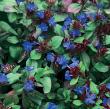
Deep blue flowers. In early fall, leaves change to a vivid mahogany red color. Growing in sun or shade. Wide range of soil types. Long-lived groundcover. USDA 5-9
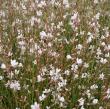
White blooms on red stems. Tolerates poor soils. USDA 5-9
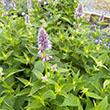
Plant Height: 3 feet
Flower Height: 4 feet
Spread: 3 feet
Sunlight: full sun partial shade full shade
Hardiness Zone: 3a
Other Names: Anise Hyssop, Licorice Mint, Hummingbird
Mint
Description:
A lovely upright perennial with beautiful black licorice-scented leaves and lavender-blue blooms from summer to fall; drought tolerant, a wonderful addition to garden beds, containers or used in cut flower arrangements; low maintenance and easy to grow
Ornamental Features:
Blue Fortune Anise Hyssop has masses of beautiful spikes of lightly-scented blue flowers with lavender overtones rising above the foliage from mid summer to mid fall, which are most effective when planted in groupings. The flowers are excellent for cutting. Its attractive fragrant pointy leaves remain dark green in color throughout the season.
Landscape Attributes:
Blue Fortune Anise Hyssop is a dense herbaceous perennial with an upright spreading habit of growth. Its medium texture blends into the garden, but can always be balanced by a couple of finer or coarser plants for an effective composition.
This plant will require occasional maintenance and upkeep, and is best cleaned up in early spring before it resumes active growth for the season. It is a good choice for attracting bees, butterflies and hummingbirds to your yard, but is not particularly attractive to deer who tend to leave it alone in favor of tastier treats. Gardeners should be aware of the following characteristic(s) that may warrant special consideration: Self-Seeding
Blue Fortune Anise Hyssop is recommended for the following landscape applications:
- Mass Planting
- General Garden Use
- Herb Gardens
- Container Planting
Planting & Growing:
Blue Fortune Anise Hyssop will grow to be about 3 feet tall at maturity extending to 4 feet tall with the flowers, with a spread of 3 feet. It tends to be leggy, with a typical clearance of 1 foot from the ground, and should be underplanted with lower-growing perennials. It grows at a fast rate, and under ideal conditions can be expected to live for approximately 6 years. As an herbaceous perennial, this plant will usually die back to the crown each winter, and will regrow from the base each spring. Be careful not to disturb the crown in late winter when it may not be readily seen!
This plant performs well in both full sun and full shade. It is very adaptable to both dry and moist growing conditions, but will not tolerate any standing water. It is considered to be drought-tolerant, and thus makes an ideal choice for a low-water garden or xeriscape application. It is not particular as to soil type, but has a definite preference for alkaline soils. It is somewhat tolerant of urban pollution. This particular variety is an interspecific hybrid. It can be propagated by division; however, as a cultivated variety, be aware that it may be subject to certain restrictions or prohibitions on propagation.
Blue Fortune Anise Hyssop is a fine choice for the garden, but it is also a good selection for planting in outdoor pots and containers. With its upright habit of growth, it is best suited for use as a 'thriller' in the 'spiller-thriller-filler' container combination; plant it near the center of the pot, surrounded by smaller plants and those that spill over the edges. It is even sizeable enough that it can be grown alone in a suitable container. Note that when growing plants in outdoor containers and baskets, they may require more frequent waterings than they would in the yard or garden.
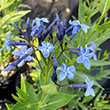
Native clump-forming slow speading groundcover. Blue spring flowers, feathery green summer foliage, and golden fall color. USDA 5-9
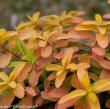
Bright yellow flowers bloom in spring to late summer, followed by attractive yellow to orange berries. Deer resistant. USDA 5-9
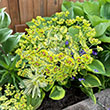
Lime blooms. Evergreen multicolored foliage. Compact. USDA 5-9
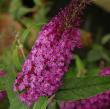
Fragrant, purple blooms. Compact dwarf. Tolerates drought & heat. USDA 5-9